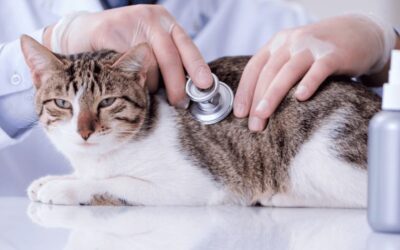How Much Does It Cost to Neuter (Spay) a Cat?

A crucial aspect of responsible pet ownership is neutering or spaying your cat. However, many pet owners might be worried about the cost of these operations. This post will give you some insight into cat spaying and neutering prices and insurance options so you can make the best choice for your pet.
What Is Cat Neutering?
The surgical removal of the testicles from male cats is known as cat neutering, commonly referred to as castration or sterilization. The generation of sperm and male hormones is stopped when the testicles are removed, which has various positive effects on your cat’s health and behavior. The general health of your cat is improved by neutering, which also helps avoid unwanted litters of kittens.
What Are the Benefits of Getting Your Male Cat Neutered?
Neutering your male cat has a lot of advantages, including the following:
Medical Benefits
Neutering male cats lessens their risk of prostate issues as well as testicular cancer. Along with other reproductive system problems, it can aid in the prevention of some UTIs. Neutering guarantees a healthier life for your cat by reducing the danger of testicular malignancies.
Behavioral Benefits
Neutering male cats helps to reduce their aggressive and territorial tendencies. It lessens the possibility of urine marking to indicate their territory, which can be especially problematic if your cat is an indoor pet. Injuries and disease transmission are decreased by the fact that neutered cats are less prone to roam and get into cat fights, which also lowers their chance of fighting with other cats. Male cats that undergo this surgery exhibit calmer, happier moods.
What Is Cat Spaying?
Cat spaying, also known as an ovariohysterectomy, is an operation done on female cats to remove their reproductive system, including the ovaries and uterus. Several benefits for the cat’s general health and behavior are provided by this surgery, which prevents the cat from reproducing.
What Are the Benefits of Getting Your Female Cat Spayed?
Many advantages come from spaying your female cat, including:
Medical Benefits
The danger of mammary gland tumors, which are frequently malignant in cats, is significantly reduced by spaying. It takes away the chance of potentially fatal uterine infections like pyometra. Additionally, spaying ensures that your cat has a healthy future by removing the possibility of ovarian and uterine cancer.
Behavioral Benefits
Cats that have been spayed are less likely to engage in yowling, restlessness, and other activities that attract male cats, which are symptoms of being in heat. Additionally, they are less likely to exhibit aggressive behavior that could disturb the peace in your home, such as territorial marking. A more steady and well-balanced temperament is facilitated by spaying your female cat.
What’s the Average Cost to Neuter or Spay a Cat?
The price of neutering or spaying a cat can differ based on several variables, including the geographic region, the veterinary facility, the age, size, and health of the cat, as well as any extra procedures required. These procedures might cost anywhere between $150 to $300.
Odie’s Wellness Plan, however, provides a new pricing option. It’s a comprehensive pet wellness package to help reimburse for these medical services.
The Plus plan was created to encourage responsible pet ownership with preventative care visits and significantly lower the traditional costs of spaying and neutering your cat.
What Determines the Cost Of Neutering or Spaying a Cat?
The cost of spaying or neutering a cat depends on several factors. These variables could consist of the following:
- Pre-Op Checkup: Before the procedure, a thorough checkup is typically done to determine the cat’s general health and ensure they are prepared for it. As the cat’s medical history, blood tests, and readiness for anesthesia and surgery are all evaluated during this examination, there may be additional fees.
- Additional treatments: Additional treatments or procedures might be necessary depending on your cat’s needs. For instance, an advanced surgical procedure can be required if your male cat’s testicles are still present. Pregnancy may necessitate extra care and surgical procedures during spaying if your female cat is a female. Because the procedure is so specialized, these circumstances could incur additional fees.
- Anesthetic: A general anesthetic is required to keep the cat safe and comfortable during neutering or spaying. Depending on the type of anesthetic used, the length of the procedure, and the monitoring tools and personnel needed to deliver and oversee it, the cost of anesthesia can change.
- Catheter Surgery: Some veterinary hospitals advise inserting an intravenous (IV) catheter during the procedure to deliver fluids and drugs. Throughout the treatment, this aids in keeping the cat stable and hydrated. This extra step can raise the cost overall, even though it isn’t always essential.
- Post-Operative Care: Your cat might need to take painkillers, antibiotics, or other medications to speed up the healing process after the operation. The price of the treatment as a whole may be affected by these post-operative care costs, which may include medication and follow-up appointments.
It’s crucial to remember that the cost of neutering or spaying a cat might vary from clinic to clinic and may also depend on your cat’s particular demands and physical condition. When seeking veterinary care for your cat, it is advised to speak with your vet to determine the precise pricing and services offered.
When to Neuter or Spay a Cat
The best time to neuter or spay a cat depends on a number of factors, including the breed, size, and general health of the cat. Neutering male cats between four and six months is often advised. Before the female cat’s first heat cycle, spaying is often done at about the same age.
You should speak with your veterinarian about the ideal timing for your cat. To give you individualized guidance on the right age for the treatment, they will consider your cat’s particular demands and health status.
Where to Get A Cat Neutered or Spayed
The most popular choice for pet owners is to have the spaying or neutering process carried out at a nearby veterinary clinic or animal hospital. Veterinary clinics frequently provide neutering and spaying procedures as part of routine care. They specialize in these surgeries and have experienced veterinarians and trained employees.
Numerous animal shelters and rescue groups also provide free or heavily discounted spay/neuter programs. These initiatives aim to encourage responsible pet ownership, which will also help to decrease homelessness.
Some towns have mobile veterinarian clinics or spay/neuter clinics that are dedicated to offering these services at reduced prices. These clinics frequently run in underserved areas or places with a high density of stray or feral cat populations.
Can Pet Insurance Cover the Cost of Neutering or Spaying a Cat?
Some pet insurance companies include routine care procedures as a part of their wellness coverage, such as Odie’s Wellness Plan. This add-on includes spaying and neutering for your cat and other routine care procedures like wellness exams and vaccinations. Available with an Odie pet insurance policy, it can bridge the gap in coverage to ensure your cat stays in good health.
FAQs
How long does it take for cats to recover from spay/neuter?
It usually takes cats between 5 and 7 days to recover after the procedure. However, you should watch for any symptoms that don’t go away or get worse and alert your vet immediately.
What should you expect after spaying or neutering a cat?
Your cat will likely be sore and tender after being spayed or neutered. They will be less active than usual and should take this time to rest as much as possible. You may also notice a decrease in appetite, which is normal for the first few days after the procedure.
Do I need to stay home with my cat after neutering?
For the first 24 hours after the procedure, you should not leave your cat alone at home. After this time, you can leave the house as long as your cat is kept safely indoors.
Where should a cat sleep after neutering?
Make a comfortable bed for your cat in a crate or a small room while they are healing after surgery.
How do I stop my kitten from jumping after being spayed?
It’s normal for kittens to still be active and energetic, even after surgery. To prevent them from jumping and promote proper healing, try to lay a cat tree on their side or place a blanket over them.



